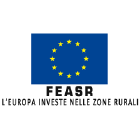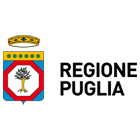N
N
National Strategy for Indoor Areas (SNAI)
The SNAI is a national strategy, also contained in the Partnership Agreement, aimed at relaunching the internal areas, i. e. the areas of the country most distant from the large agglomeration centres and the basic services (school, health and mobility)
Natura 2000 network
This is an ecological network covering the entire territory of the Union, set up under Directive 92/43/EEC “Habitat” to ensure the long-term maintenance of natural habitats and species of flora and fauna threatened or rare at Community level. The Natura 2000 Network consists of Sites of Community Interest (SCIs), identified by Member States in accordance with the Habitats Directive, which are subsequently designated as Special Areas of Conservation (SACs) and also includes Special Protection Areas (SPAs) established under Directive 2009/147/EC “Birds"; on the conservation of wild birds (IBA, Important Birds Area). An innovative element is the recognition of the importance of some elements of the landscape that play a connecting role for wildlife (art. 10). Member States are invited to maintain or, where appropriate, develop these elements in order to improve the ecological coherence of the Natura 2000 network.
Natural forest
All the stand in question, including the renovation, resulting from natural dissemination or pre-existing stumps (source: “Selvicoltura generale" P. Piussi, UTET)
Network contract
Network contract is an agreement by which several entrepreneurs pursue the aim of increasing, individually and collectively, their innovative capacity and their competitiveness on the market and to this end they are obliged, on the basis of a common network program, to cooperate in forms and in predetermined areas related to the exercise of their companies or to exchange information or services of an industrial, commercial, technical or technological nature or even to jointly exercise one or more activities falling within the scope of their company. Demarcation: defines the delimitation of investments that can be financed by more than one Community Regulation.
Non-agricultural area
Non-agricultural areas are all non-forested areas and those that do not fall within the definition of agricultural land; all peri-urban and suburban areas that in the Regulatory Plans of the municipalities have a different destination from the agricultural one (green areas, craft areas, industrial areas, etc. . ). Pastures, meadows, pastureland are excluded. Non-agricultural land includes uncultivated land, which can be defined as land that was not in production in the last two years preceding the submission of the application for financing



